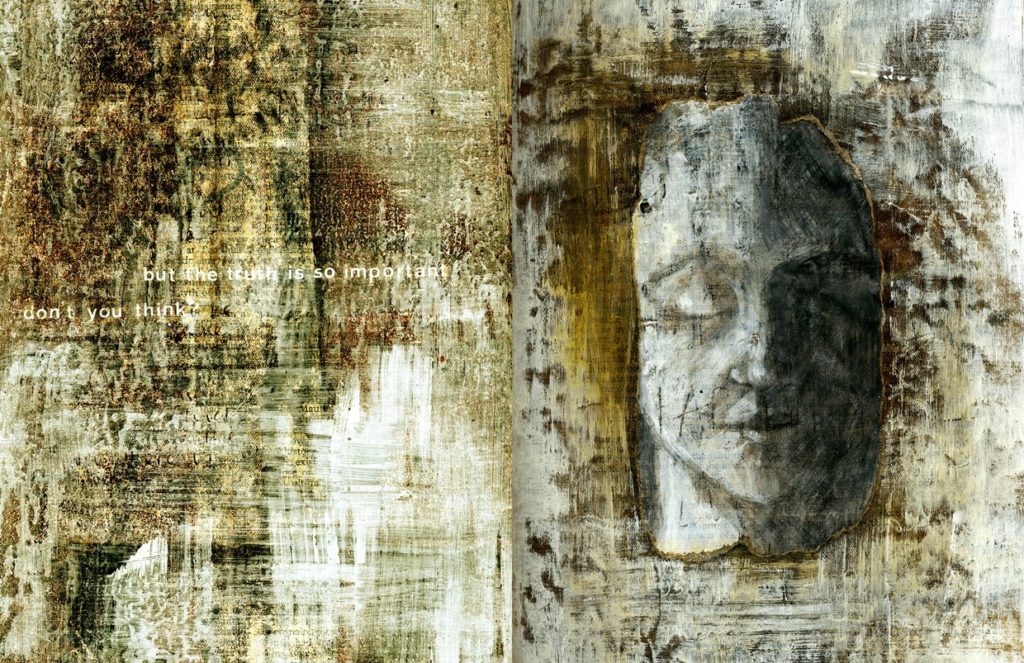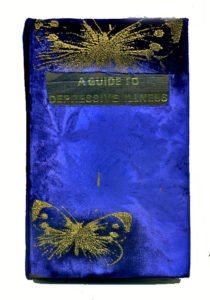Touch & Tell turns the museum’s exhibition space into a cabinet of wonders where the tangible and intangible interplay.
As we walk fearfully in dark places, guided by only the touch of our hands, so we seem to stand blindly in life, circled by doubt of foreignness in things.
Anna Freud

Bookworks 5, J. Alder
While in the glass cabinets dangerous, fragile and secret things are kept out of reach, the other displays break with the traditional touch taboo of museums and galleries. Visitors are encouraged to open boxes and books, to gently explore with curious hands as well as eyes and mind, to rummage through the drawers of the artist’s memories and imaginations as if they were their own.

A guide to depressive illness, Solveigh Goett
Drawing on her rich archives of textile materials and stories Solveigh Goett’s evocative and often multi-sensory artefacts are dedicated to the small things in life, creating intimate story spaces to reflect on human experience. Entangled in the cultural web of Freud’s life story work through her background in narrative research, Goett picks up threads from the memory fabric of the house and adds her own tales and characters. Her practice extends and builds upon the habit of knitting and weaving that accompanied much of Anna’s Freud intellectual work. The concepts informing her work allude to the intricate patterns on Freud’s consulting couch that in turn mirror the complex tapestry of the minds that rested on it. Her tactile work pays homage to Dorothy Burlingham’s work with the blind. Her twilight figures, crafted from old family nightgowns, seem to have escaped from the dream-scape of the bedroom into the house’s public spaces, caught up in the act of metamorphosis.
Another cast of characters enters the story world of the house through Judith Alder’s The Visitor videos. Part of a collaboration with artist and performer Clare Whistler, these fragments of fictions, each one invested with its own unique learned, imagined and implied narratives, play with a strangeness in the familiar as Alder and Whistler embrace the presence of “a foreignness in things.”Alder’s Books & Boxes (2001 – 2011), reminiscent of the forgotten contents of family attics, seem familiar yet removed from reality. Like old diaries or photograph albums, they are embossed with the traces of life’s experiences, repositories of fragments of personal histories, private and precious. Perhaps forgotten, yet impossible to discard they must be carefully stored, put away, archived, the inner text and textiles suggesting private passions, suppressed emotions, confusion, conflict and uncertainties.